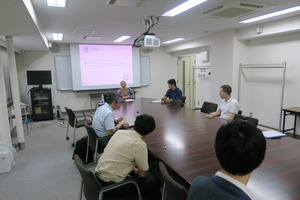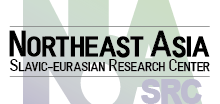German-Polish Bilingualism: Bilingual Language Education and Language Policy - an example of Słubice-Frankfurt (Oder)
Dr. Barbara Alicja Jańczak (Adam Mickiewicz University in Poznań, Poland)
For lazy report-writers searching for a way into an article, Wikipedia has become an indispensable tool for tidbits of information. The town of Słubice on the German-Polish border then, did a service to struggling scribes around the world when it unveiled the world's first monument to the online encyclopedia in 2014. Although not without its critics, most would agree that Wikipedia's rise has encouraged communication across borders. According to the monument's inscription, '[Wikipedia is] the greatest project co-created by people regardless of political, religious or cultural borders'.1 So, to have such a monument in a town such as Słubice seems particularly apt.
On the other side of the River Oder that flows to the west of Słubice is the German town of Frankfurt (Oder). Until 1945, Słubice was a part of the German city. The defeat of the Nazi regime, the expulsion of the German population east of the Oder-Neisse line and the shifting of Poland's borders to the west made this region of Europe an area of lasting interest to border studies. An expert on linguistics, Professor Jańczak adapted her presentation for a non-specialist audience to explore how the 'twin town' of Słubice-Frankfurt has become a 'language laboratory' for testing ideas about bilingual language education and language policy.
Despite the complicated history of Słubice-Frankfurt, the need for bilingual language education is a relatively recent phenomenon. The German-Polish border was closed during the Cold War so the municipalities only started to consider language policy in the early-1990s. The dilemma the twin town's residents faced was whether to learn English as the global lingua franca, or to promote the neighbour's language as the lingua culturalis. Choosing the latter might conjure an impression of former enemies learning each other's language and sharing each other's culture. As Professor Jańczak persuasively argued, such an impression would be misleading because the border's effects on language are asymmetric. Differences in economic power, cultural achievements, the status of language and the number of speakers all affect how bilingualism develops.
The reality of German-Polish bilingualism is that many more Poles are learning and speaking German, than there are Germans who are acquiring Polish. With salaries in Germany being on average four times greater than in Poland, Poles in Słubice have an incentive to learn their neighbour's tongue. For Germans, crossing the border gives them access to good quality markets, shopping and restaurants at a fraction of the price they would pay in Frankfurt. Professor Jańczak's linguistic approach has led her to conduct in-depth analysis of Polish market traders' use of German in their appeals for trade.
Professor Jańczak concluded by reminding her audience that while borderlands create a special opportunity for bilingual education, people's motivations for learning the lingua culturalis vary. The lure of the neighbour's culture is often overshadowed by the logic of the market economy. Perhaps for this reason the inscription on the Wikipedia monument omits 'economic' from the list of borders crossed.
[1]'Wikipedia Monument', Wikipedia - The Free Encyclopedia, https://en.wikipedia.org/wiki/Wikipedia_Monument [Accessed 26 July 2017].

 Eurasia Unit for Border Research (Japan)
Eurasia Unit for Border Research (Japan)




